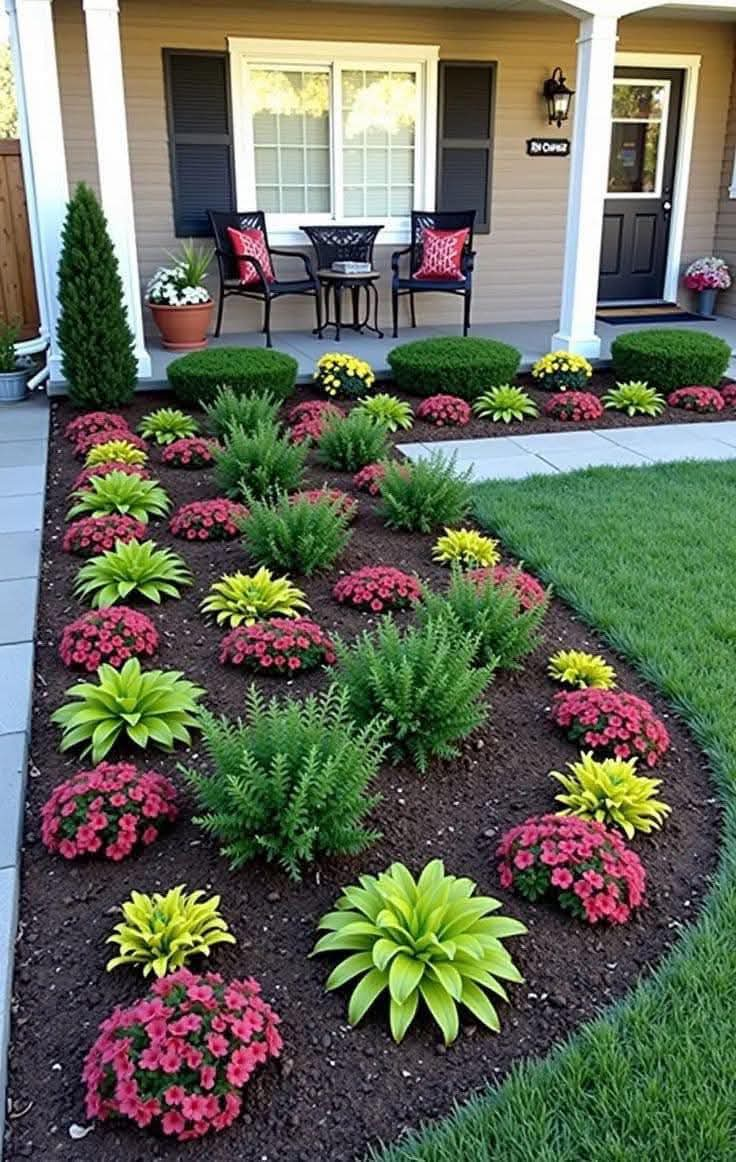Best Low Maintenance Flowers To Grow In The Garden
Gardening is one of the most rewarding hobbies, but not everyone has the time or energy for constant upkeep. The good news? A stunning, vibrant garden doesn’t have to mean hours of pruning, watering, and fertilizing. With the right low maintenance flowers, even beginners or busy homeowners can enjoy a colorful, blooming paradise with minimal effort. In this guide, we’ll introduce the best low maintenance flowers to grow in your garden—whether you’re a seasoned green thumb or just getting started.
What Are Low Maintenance Flowers?
Low maintenance flowers are varieties that require little attention once established. They typically:
- Thrive in average soil conditions
- Are drought-tolerant or require minimal watering
- Resist pests and diseases
- Bloom reliably without frequent deadheading
- Come back year after year if they’re perennials
By choosing these fuss-free blooms, you can reduce your gardening chores while still enjoying a lush, blooming landscape.
Top 15 Best Low Maintenance Flowers for Your Garden
Here are the best low maintenance flowers that can transform your garden into a stress-free sanctuary:
1. Marigolds (Tagetes spp.)
Type: Annual
Light: Full sun
Why It’s Easy: Marigolds are among the easiest flowers to grow. They tolerate poor soil, deter pests, and bloom nonstop from spring to frost. Deadheading helps but isn’t necessary.
2. Coneflowers (Echinacea)
Type: Perennial
Light: Full sun
Why It’s Easy: Native to North America, coneflowers thrive on neglect. They’re drought-tolerant, attract pollinators, and bloom for months.
3. Zinnias
Type: Annual
Light: Full sun
Why It’s Easy: Zinnias grow quickly from seed and bloom prolifically. They handle heat well and are available in countless colors.
4. Black-eyed Susan (Rudbeckia)
Type: Perennial
Light: Full sun
Why It’s Easy: Once established, these cheerful yellow flowers require little more than occasional watering and can reseed themselves.
5. Lavender (Lavandula)
Type: Perennial
Light: Full sun
Why It’s Easy: Lavender is not only beautiful and fragrant but also drought-resistant and deer-repellent. Great for borders and pollinator gardens.
6. Daylilies (Hemerocallis)
Type: Perennial
Light: Full sun to partial shade
Why It’s Easy: Each bloom lasts a day, but the plant produces hundreds. Tough and adaptable, daylilies thrive in almost any soil.
7. Hostas
Type: Perennial
Light: Shade to partial shade
Why It’s Easy: Ideal for shady areas, hostas are grown more for their lush foliage than flowers. They require minimal care once planted.
8. Petunias
Type: Annual
Light: Full sun
Why It’s Easy: Petunias bloom all season long with minimal effort. Choose a spreading variety like Wave Petunias for big impact with little upkeep.
9. Sedum (Stonecrop)
Type: Perennial
Light: Full sun
Why It’s Easy: Sedums are succulents that thrive in dry, rocky conditions. Their fleshy leaves retain water and their late-season flowers attract bees.
10. Coreopsis (Tickseed)
Type: Perennial
Light: Full sun
Why It’s Easy: Coreopsis is heat-tolerant, deer-resistant, and blooms for months without needing much attention.
11. Geraniums (Pelargonium)
Type: Annual in most zones
Light: Full sun to partial shade
Why It’s Easy: These classic container flowers are drought-tolerant and easy to propagate. They thrive in garden beds or pots.
12. Calendula (Pot Marigold)
Type: Annual
Light: Full sun to partial shade
Why It’s Easy: Fast-growing and edible, calendulas bloom from early spring until frost. They self-seed easily for next season’s blooms.
13. Sweet Alyssum
Type: Annual or short-lived perennial
Light: Full sun to partial shade
Why It’s Easy: A carpet of small, fragrant white or purple flowers that grow well even in poor soil.
14. Russian Sage (Perovskia atriplicifolia)
Type: Perennial
Light: Full sun
Why It’s Easy: With silvery foliage and violet-blue flowers, Russian Sage is heat- and drought-tolerant and requires no fertilizing.
15. Yarrow (Achillea millefolium)
Type: Perennial
Light: Full sun
Why It’s Easy: Hardy and colorful, yarrow resists deer, drought, and disease. It also spreads easily to fill in bare spots.
Tips for Growing Low Maintenance Flowers
- Choose the Right Spot: Know the sunlight and soil conditions of your garden and match flowers accordingly.
- Group by Watering Needs: This reduces overwatering or underwatering different plants.
- Use Mulch: Mulching conserves water, suppresses weeds, and improves soil.
- Avoid Over-Fertilizing: Most low maintenance flowers thrive in average soil; too much fertilizer can reduce blooms.
- Deadhead Occasionally: While not necessary, removing spent flowers can prolong bloom time in some species.
Health and Environmental Benefits
Low maintenance flowers not only beautify your space—they support biodiversity and pollinators like bees, butterflies, and hummingbirds. Plus, gardening is known to reduce stress, improve mood, and even support physical health through gentle exercise.
Conclusion
Creating a beautiful garden doesn’t mean dedicating your weekends to weeding and watering. With the right selection of low maintenance flowers, you can enjoy a vibrant, thriving outdoor space with minimal effort. Whether you want bursts of color, pollinator appeal, or fragrant relaxation, there’s a stress-free flower that fits your garden’s personality. Start planting today and let your garden thrive—naturally!
